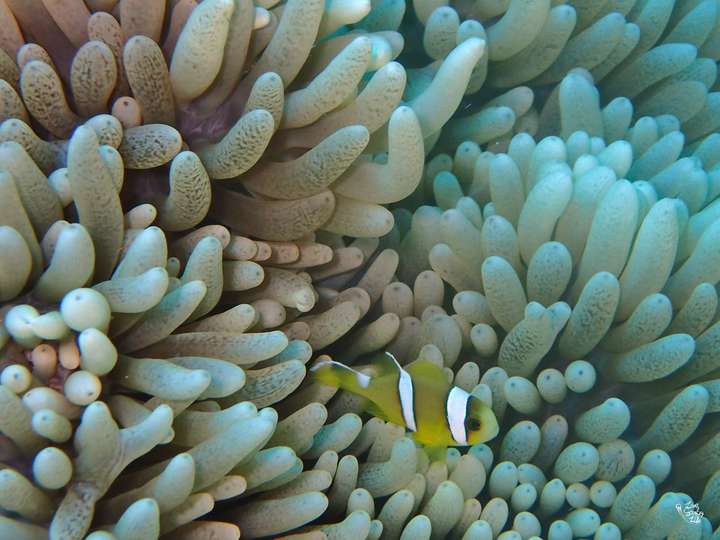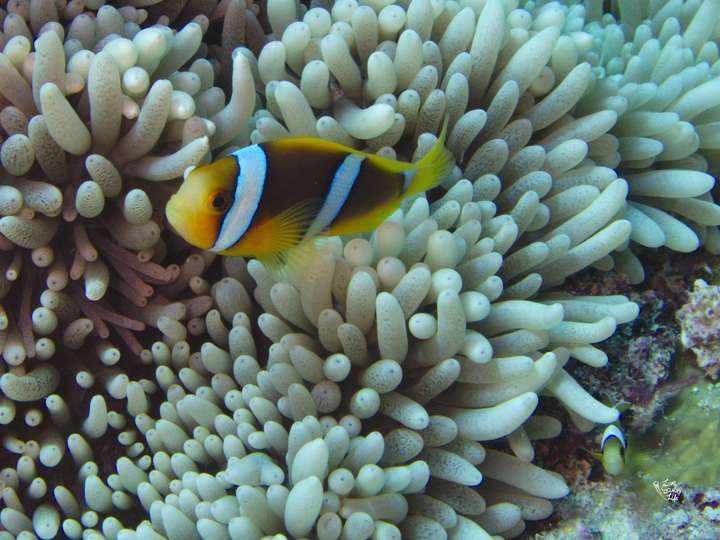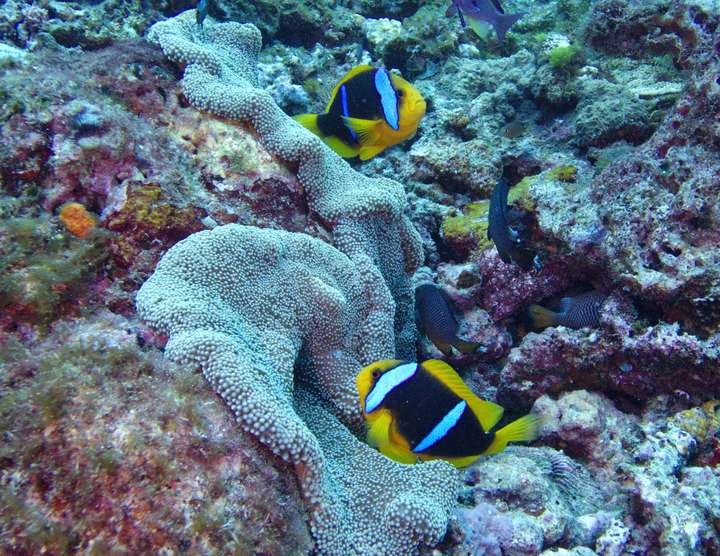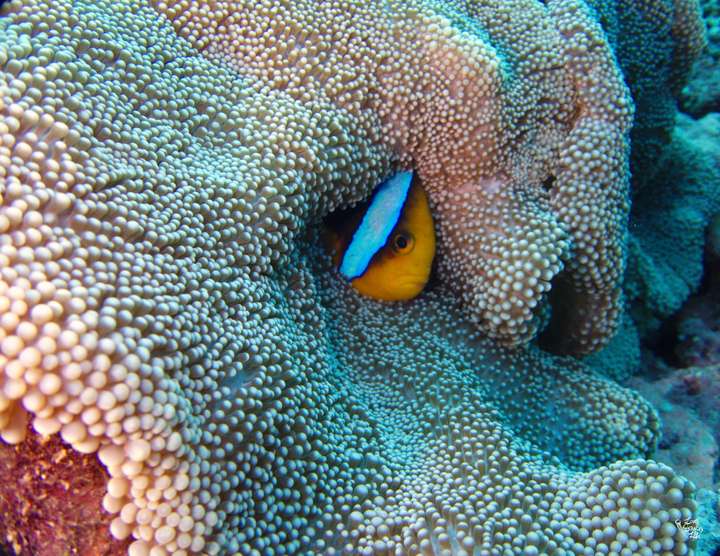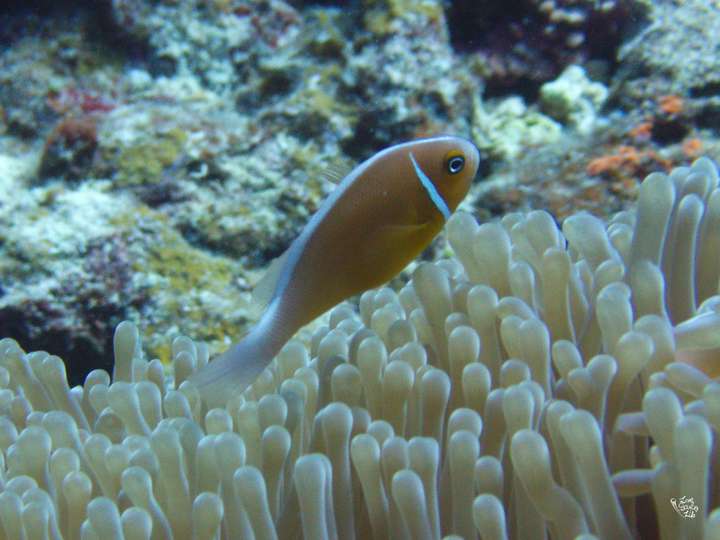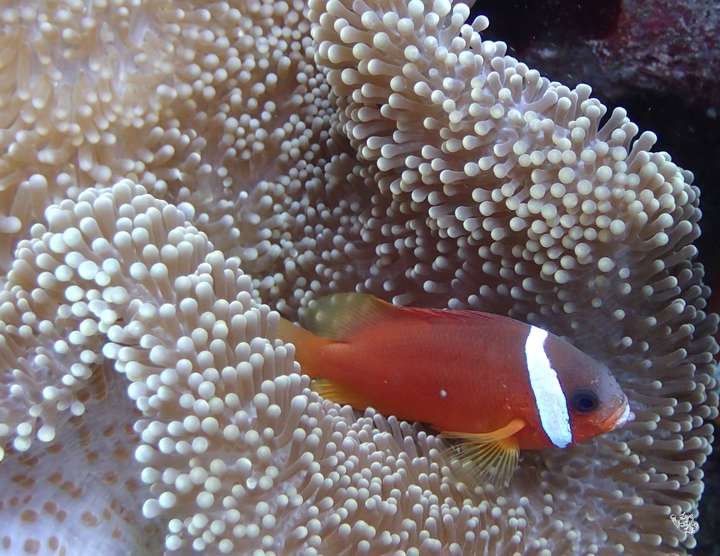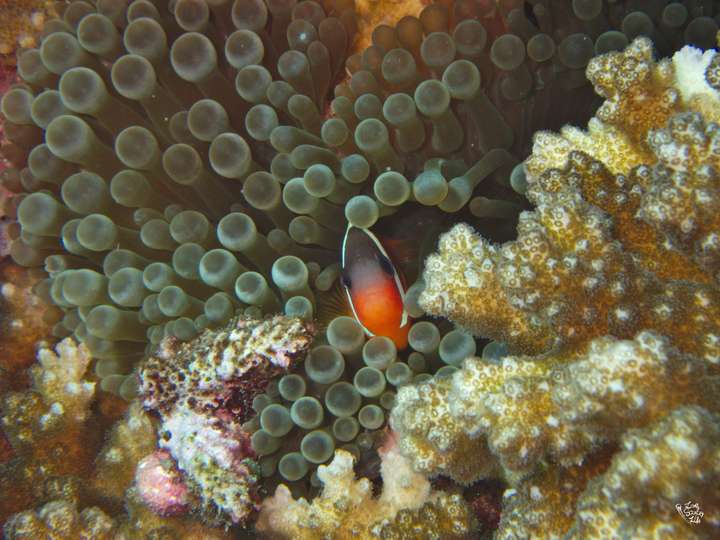Fiji - Clownfishes
EveEveryone knows Clownfishes, also called anemonefish as they live in anemones, as Nemo from the movie of Finding Nemo. After being in the Caribbean for half a year, they are one of the marine life I miss a lot.
Clownfishes are not found everywhere, they do not live in the Caribbean Sea, Mediterranean Sea or Atlantic Ocean.
When I get back to the water in Fiji, I am so excited to see them again. In Fiji, there are at least five species of clownfishes, Clark's anemonefish, orangefin anemonefish, pink anemonefish, Fiji anemonefish, Pacific anemonefish.
Clownfishes have symbiotic relationship with anemones, meaning that they provide mutual benefit to each other. The anemone provides shelter and protection for clownfishes from predators as well as food scraps left over from what the anemone eats.
In return, the anemone gains nutrients in the form of waste like the clownfish excrement and clownfishes would defend the anemone from its predators and parasites. This interesting symbiotic relationship make anemones home for the clownfishes.
Different species of clownfish have their preferred anemone species for their home. Currently, we still know very little about how different species select their host anemones and why specific clownfishes tend to pick specific anemones. There are researchers who found that there is a relationship between colour of clownfishes species and the toxicity of its anemone host. The more toxic the anemone, the less colourful the fish. We still have a lot to understand in this ocean world, let wait for more to come. If you are interested in the topic, there is an interesting article you can read "Choosing which anemone species to call home has dramatic consequences for young clownfish" by Hayden Walle.
Fiji Clownfishes
Clark's anemonefish, also called yellowtail anemonefish, is the most common one sighted in Fiji. Their body are black to entirely orange with pair of white or pale bluish bars where second bar are wide, with yellow or white tail and usually has narrow white bar of tail base when their body is dark.
Orangetail anemonfish, have very similar appearance and body colouration as Clark's anemonefish. They have dark body with orange to yellow head, upper back and fins. Similarly to Clark's anemonefish, they also have two white or pale bluish bars, but their second bar is narrow. Their tail can be in white or yellow colour.
Pink anemonefish has pinkish to orangish body, with white mid-dorsal stripe runs from between the eyes to tail and narrow white head bar.
Fiji anemonefish (Amphiprion barberi) has entirely red-orange body with one white head bar. This species has small geographic range, you only can see them in Fiji, Samoa or Tonga.
To be honest, I still have not seen the Pacific anemonefish so far in Rainbow reef (after 12 days of diving), I am looking forward to see it.
